Meet an Educator is a monthly series by Early Bird, where we feature the work of educators across India who are actively spreading the joy of birds and nature. This month’s featured educator is Tahaj Hussain, a nature educator from Assam and GreenHub fellow working in the Upper Siang district of Arunachal Pradesh.
Do tell us about yourself, where you are from, and your work
I am Tahaj Hussain, a postgraduate in Travel and Tourism Management, hailing from the village of Nakachari in Jorhat, Assam. Before becoming a part of the Nature Education universe, I was working in the corporate sector. I happened to quit my job and was fortunate enough to get selected for the Responsible Tourism Fellowship by GreenHub. During the fellowship, the idea of Green School came up, which led me into the world of Nature Education. At present, we are working in the small village of Gobuk in the Upper Siang district of Arunachal Pradesh.
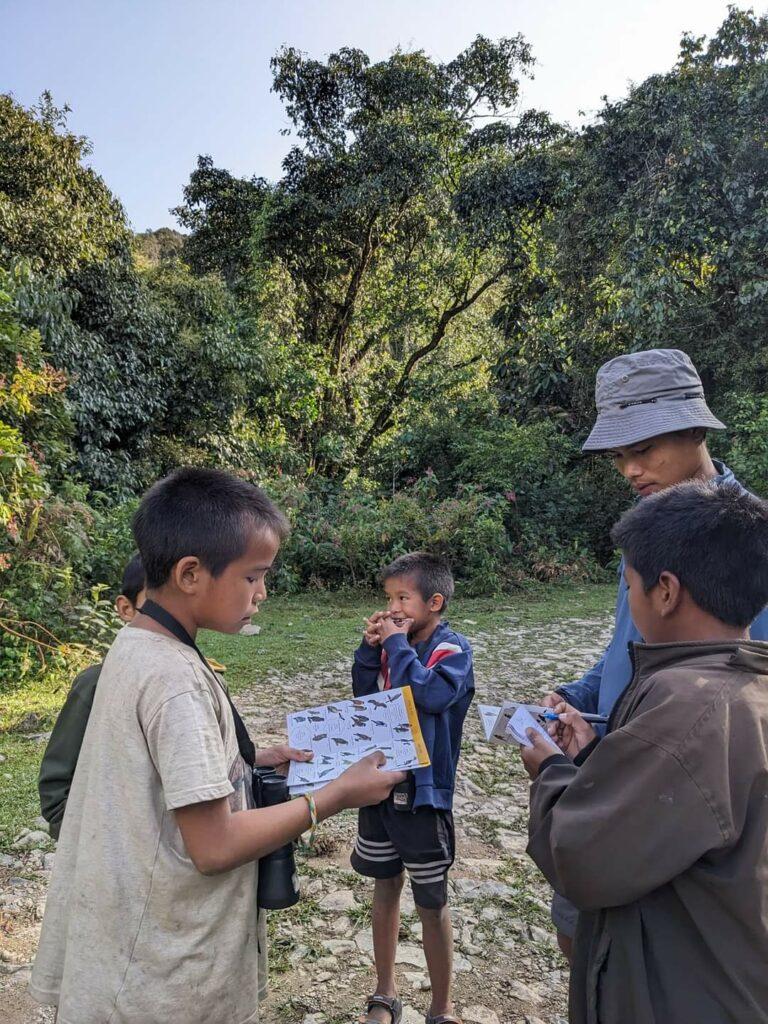
Are you a birder? What about bird watching excites you?
I’m not a birder, but my interest in birdwatching has been growing lately, especially since I came to the village of Gobuk in the Upper Siang district of Arunachal Pradesh. Recently, I visited Pakke Tiger Reserve and fulfilled a long-standing wish of seeing a Hornbill. Until then, I had never seen one. Upon learning that I would be attending a Nature Education workshop in Pakke, I silently hoped to catch sight of at least one Hornbill.
During my time in Pakke, I vividly remember dreaming about a Hornbill in the morning. To my disbelief, that exact scene from my dream was replicated during an outdoor session. I saw three Hornbills flying just like they did in my dream, only this time, they were making real sounds. It was an incredibly wholesome experience, and later, I was astonished to spot 30-40 Hornbills all at once! I had no idea that they were so abundant in Pakke.
When and how did you get interested in bird/nature education?
To be very honest, I never knew that there was something called nature education. When the idea of Green School came up during our fellowship of Responsible Tourism under GreenHub, and the idea got appreciated and approved for further work, only then did I realize that the concept of Green School falls under Nature Education. Very recently, when we went to Pakke Tiger Reserve for a workshop focusing on Nature Education, my interest in the whole scenario of Nature Education evolved in a more mature way. So, I can say unknowingly I stepped into something that holds much value and eventually fell in love with the process.
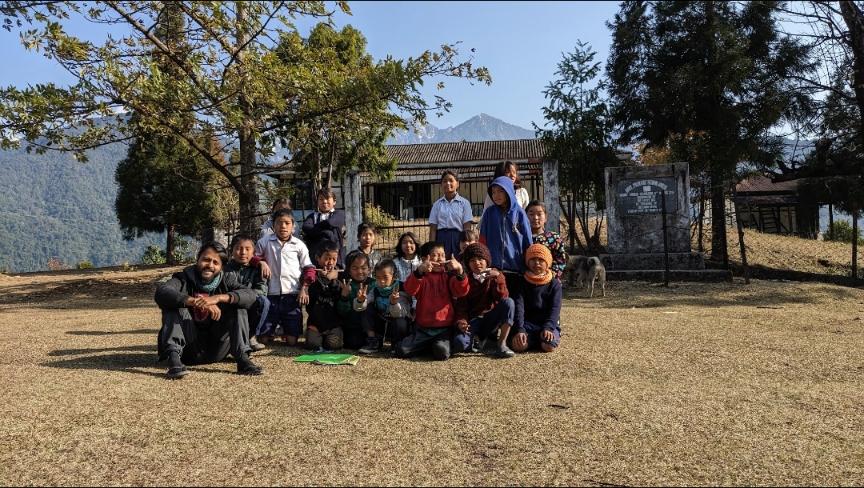
What do you hope to achieve through your education work?
We are currently running a program called Green School in the lower primary school of Gobuk village in the Upper Siang district of Arunachal Pradesh. Our goal is simple: to shift the mindset of these students from hunting birds to establishing friendships with them. Currently, we aim to make these kids more aware of the importance of their avian friends in their surroundings and how they contribute to the environment. Through the kids, we are also working to spread awareness among parents and the community.
The timeline for this project is until March 2024. At present, we are thinking of connecting with the schools of nearby villages to spread the concept of Green School. The vision that we have is that Green School would act as a centre for conservation and awareness of wildlife, playing an important role in the Responsible Tourism initiative we are trying to initiate in the village of Gobuk.
Why do you believe it is important for children to learn about birds or connect with nature?
It is crucial for children to learn about birds and connect with nature because they are the future stewards of their local ecosystems. By instilling a sense of conservation in them, we are attempting to empower the next generation to protect their unique environments, fostering a commitment to preserving biodiversity and setting an example for sustainable practices in their communities. This early education lays the foundation for responsible environmental awareness and ensures the longevity of different unique and rare species in their jungles and mountains.
The interesting thing about the children in Gobuk is that they actually introduced us to the different species of birds in their locality. They know so well, as they used to hunt birds. They have immense knowledge of the birds, the season in which they come, the trees they build their nests in, the fruits, and insects they feed on. They have the full knowledge.
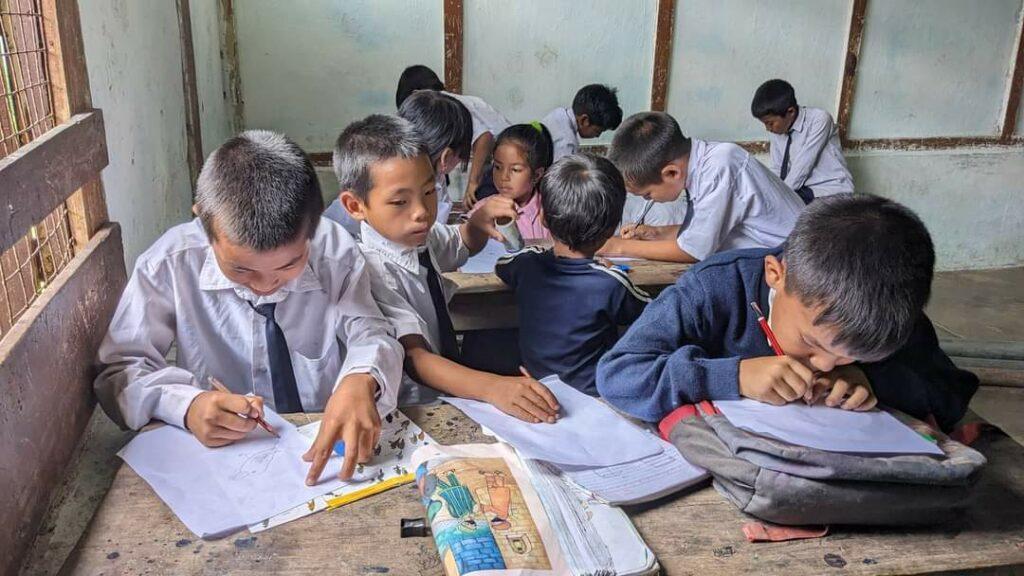
What tools or resources have helped you in teaching about birds? Can you describe an approach that has worked exceptionally well for you?
I believe that the documentaries screened on Fridays have significantly contributed to the teaching process. This medium is captivating primarily because it is digital, and secondly, we utilize a laptop and projector. These devices instantly capture their attention, followed by the documentaries, of course. Another effective approach involves nature walks with Early Bird pocket guides. Binoculars also play a cool role during these walks.
We encourage participants to write down the names of the birds they observe in their local language. Upon returning from the trail, we ask them to draw the birds and note down the English names from the pocket guides. Using this method, we have identified over 40 species of birds within a span of two hours. This trail and activity continue to be one of the most popular among the activities we conduct.
Additionally, we organise nature-based games and activities every Wednesday. On Wednesdays, we conduct different nature-related games and activities. For example, “Guess the Tree?” In this activity, one participant would be blindfolded, and the other would take that participant to a tree and make him/her feel the texture of that tree and bring the participant back to the origin. After that, the blindfolded participant needs to find the tree, and at the end, he/she needs to hug the tree and say thanks. Other activities include Dumb Charades, where one would act as an animal, and the others would guess what the animal is. We also have storytelling sessions, where the kids would tell their local stories and folklore.
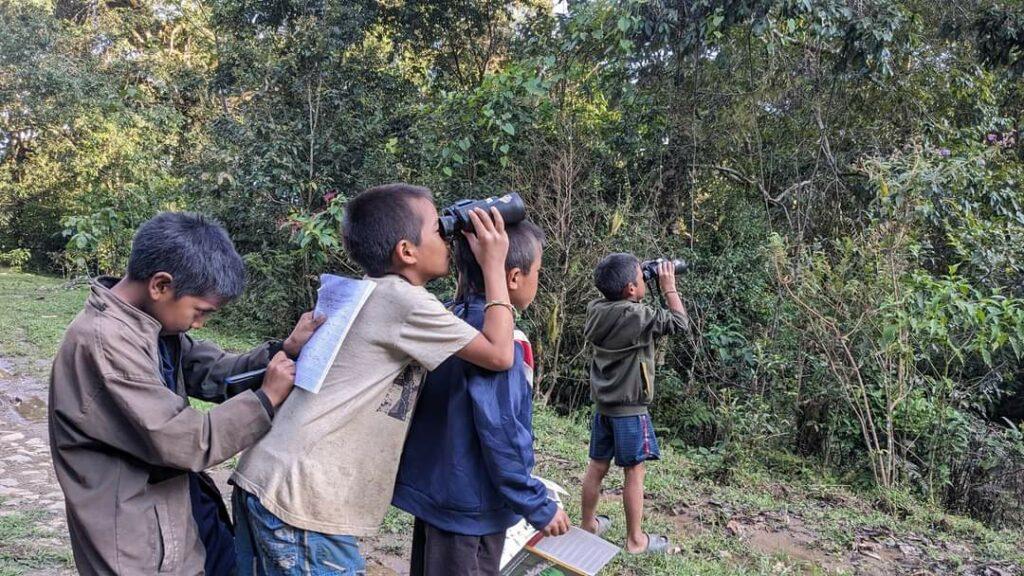
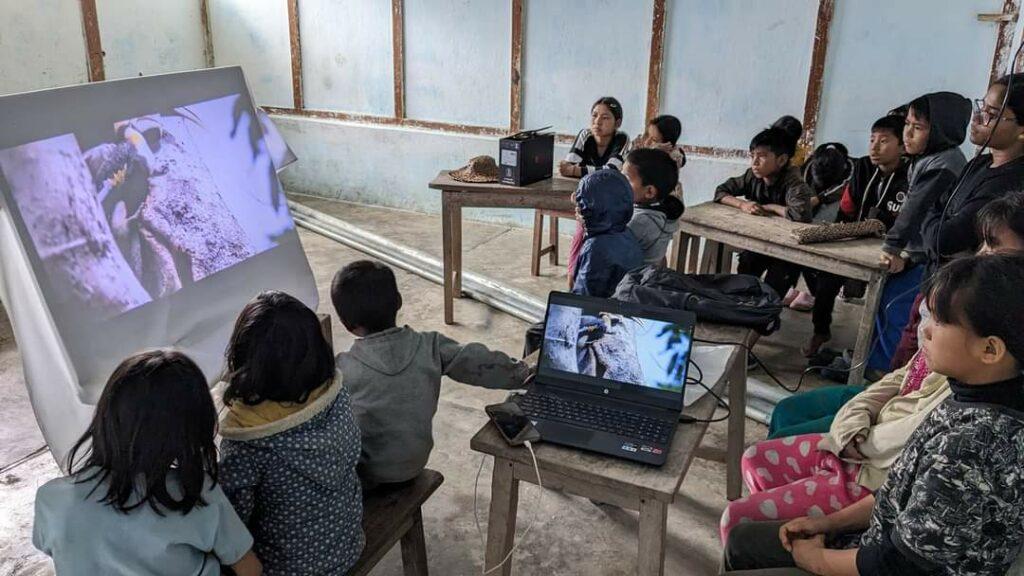
Have you encountered a significant challenge as a bird/nature educator, how did you overcome it?
Our main challenge or concern is who will take our initiative forward. After we move out of the village in a year, what’s next? The teachers don’t show that much interest in what we are doing. They do appreciate it, but there’s not much interest from their end, which sometimes becomes very demotivating. One of our team members is from the village itself, but even he feels that without more members, it is difficult to take the initiative forward. The youth don’t stay in the village to voluntarily come up and take the process forward. There’s this issue as well. We are discussing things with the community, and we are hopeful that something might come up to take the Green School initiative forward.
As we conduct our activities and games after school hours, by that time, the students get hungry and tired. Also, to grab their interest and retain their attention throughout the time was a challenge in the beginning. At first, we thought of conducting the sessions for 1 hour, but when we noticed their attitude towards it after one or two days, we reduced the duration to 20-30 minutes.
Do share any memorable moment or experience you have had in teaching kids about birds/nature. Can you recall any insightful instance that shaped your perspective?
There was a student who used to be the top hunter among all the students. Initially, when we met him, he was chasing down a bird with a catapult to hunt it. When we asked him not to do so, all he replied was, “Why not?” That was our first encounter with bird hunting in an open space. So, when we began teaching them or spreading awareness on birds and animals through our activities, he gained interest. Having the attention of the top hunter was a big achievement for us, we thought. He still chases birds throughout the day, but with binoculars now. So, that worked like a catalyst for us. I hope it lasts.
I remember one incident when this kid, the top hunter among these kids, rescued a Red-vented Bulbul from the road and brought it to us. Later, he went on to build a nest for the bird and placed it in a tree. That incident motivated all of us because he was the same guy who refused to tell us that he wouldn’t stop hunting birds when we first met. This transition was something very heartwarming for us.
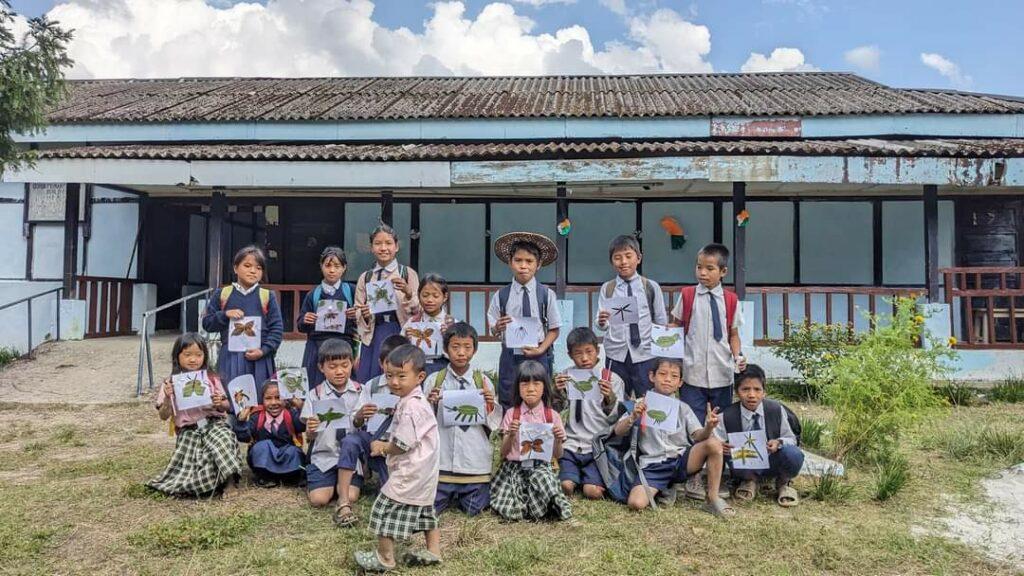
Have you noticed any changes in your learners after they received exposure to birds and nature-based learning? If yes, what are they? If not, why do you think that is?
As previously mentioned, the leading hunter continues to observe birds with binoculars, and all of his followers do the same. Currently, there is a competition among them to acquire binoculars, with some struggling to pronounce the word correctly, often saying “Binoculi” instead. During their free time, they approach us, requesting binoculars. To assist them in bird identification, we provide Early Bird’s pocket guides.
We have heard that some individuals have not completely abandoned hunting, but we maintain hope that they will gradually give it up. Among the 22 students, a maximum of three occasionally engage in hunting quietly. Our intelligence team is actively addressing this matter!
In the past, they pursued bird hunting as a sport using catapults. Nowadays, they still chase birds, but now they use binoculars. They frequently express dissatisfaction with their friends from the village who are studying in the nearby town, claiming that these friends do not listen to them and continue to hunt birds. We often encounter incidents where community members assure us not to worry, explaining that they are going fishing, not bird hunting. The message is spreading in various ways, but it will undoubtedly take time, as not hunting birds is a new concept for them.
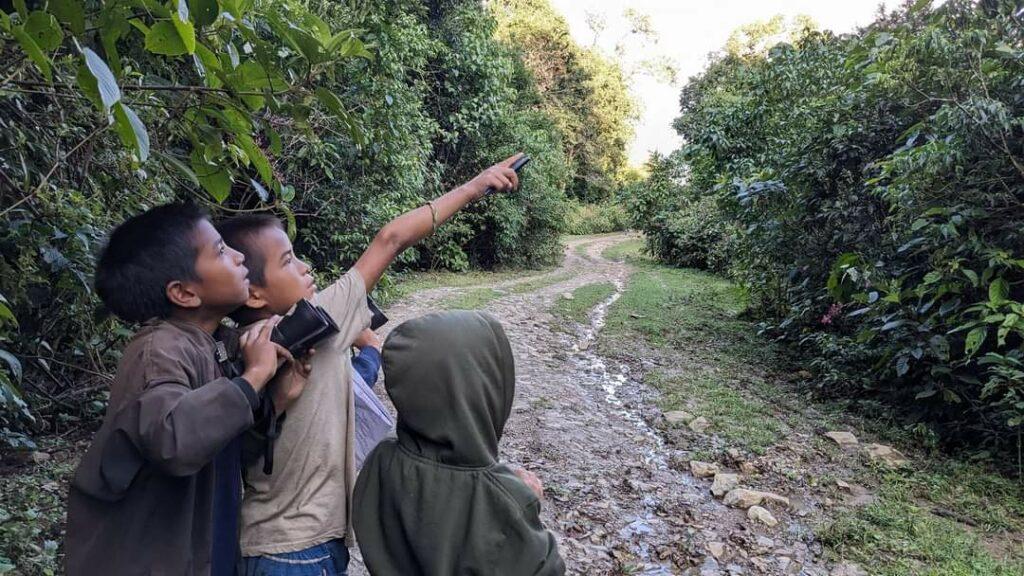
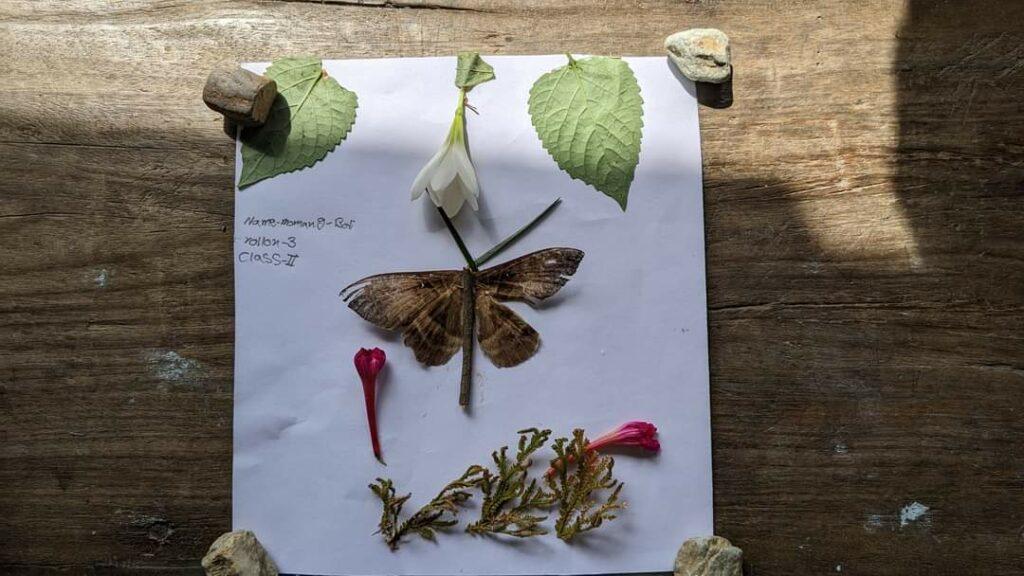
What message would you have for your fellow educators, or somebody starting out in their nature education journey?
As newcomers in this field with no prior experience, every day is a learning opportunity for us. Nature Education seems intriguing and, at times, easy, but its effectiveness depends on the age group you are working with. You need to design your activities and processes accordingly.
Sometimes, you might feel completely demotivated when some of your activities fail miserably, or students don’t find them engaging enough. It can make all the time and effort you’ve invested feel like it’s going in vain.
However, there are days when activities or games you initially thought wouldn’t work well turn out to be a big hit, and you find yourself motivated again. Personally, I don’t consider myself a Nature Educator; I am still in the learning process, and I remain hopeful for beautiful things to come.

